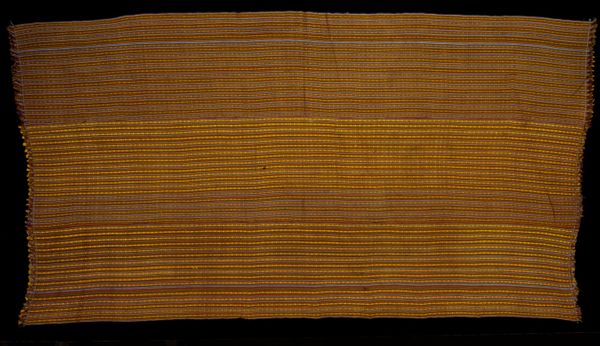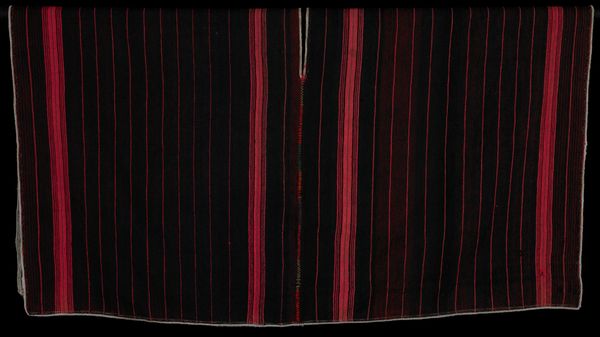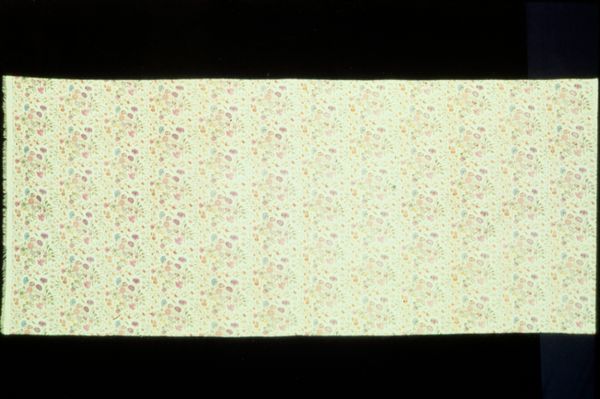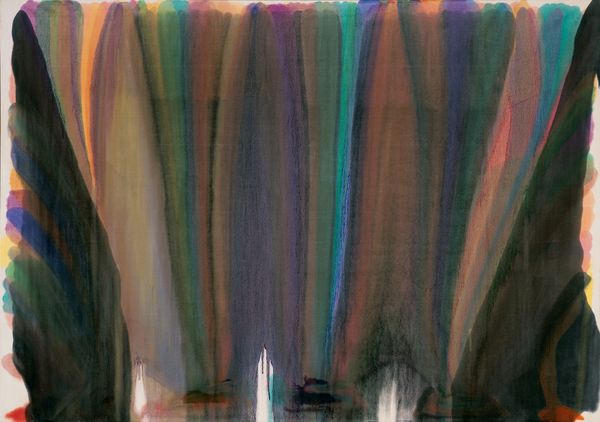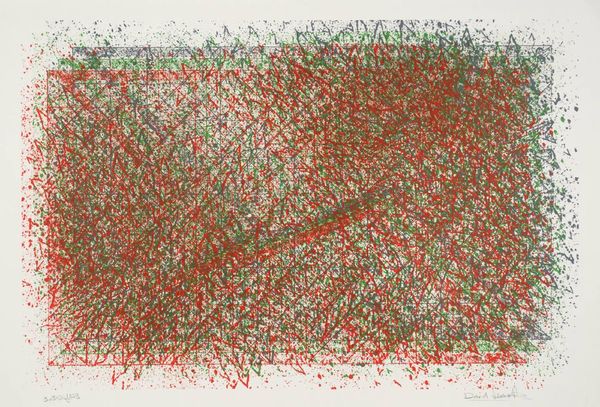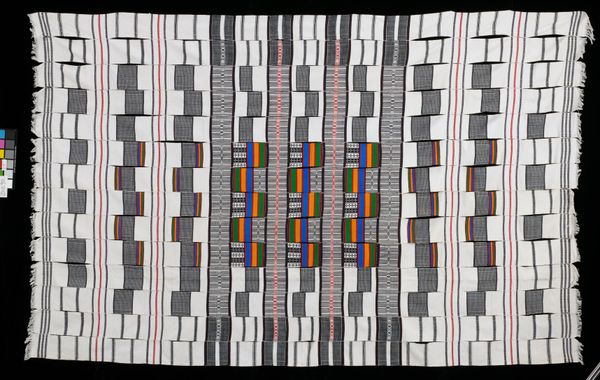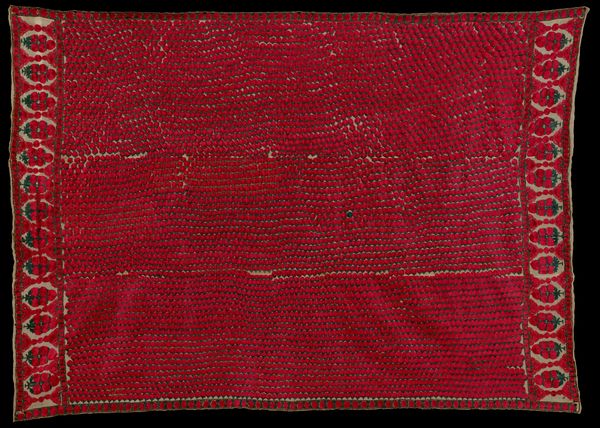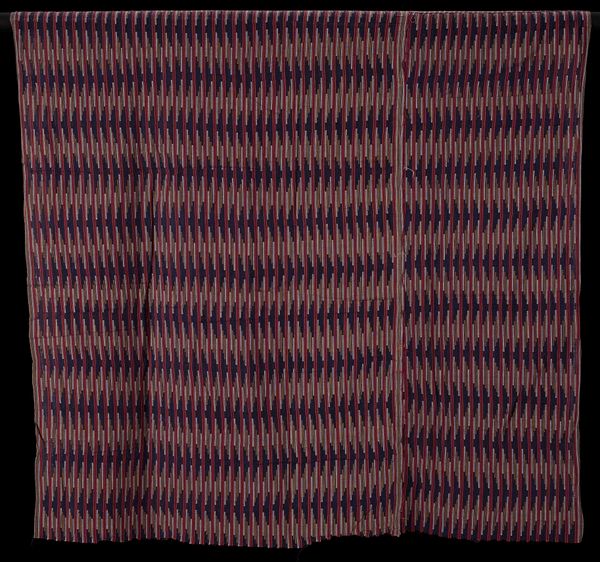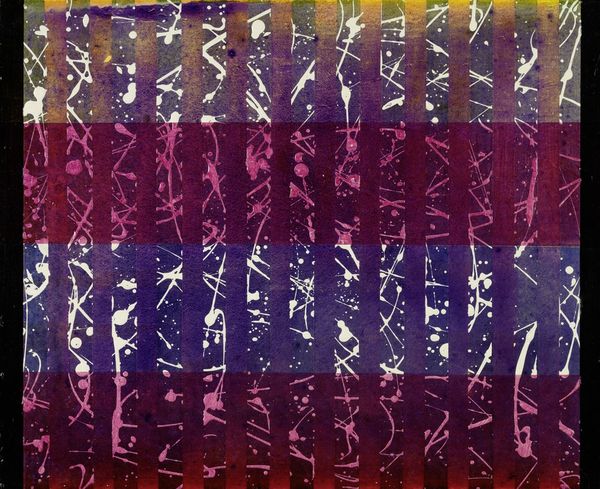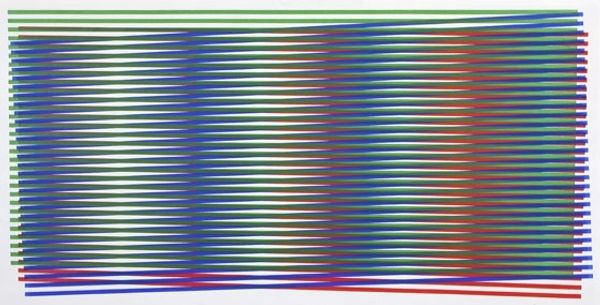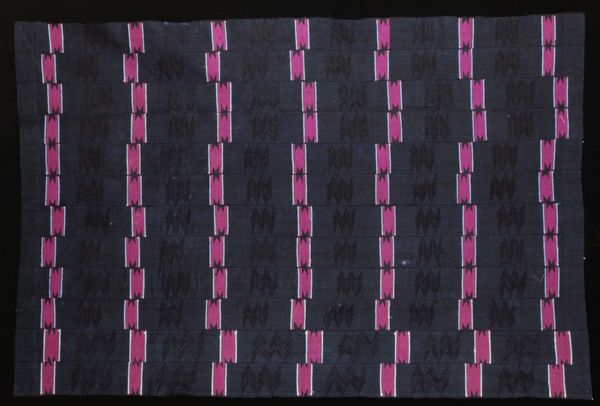
fibre-art, weaving, textile, cotton
#
geometric grid
#
fibre-art
#
random pattern
#
weaving
#
textile
#
geometric pattern
#
abstract pattern
#
minimal pattern
#
organic pattern
#
intricate pattern
#
pattern repetition
#
cotton
#
beaded
#
layered pattern
#
indigenous-americas
Dimensions: 68 x 41 in. (172.72 x 104.14 cm) (including fringe)
Copyright: Public Domain
Curator: The artwork before us, crafted in 1960, is a piece called "Rebozo," housed right here at the Minneapolis Institute of Art. Editor: My initial impression is one of subdued vibrancy; the interplay of stripes and subtly rendered flora and fauna offers a complex yet delicate visual experience. Curator: Indeed. We are seeing a textile piece; more specifically, a fibre art made from cotton. Considering the meticulous patterns, could you speak on the significance of its medium? Editor: Well, I think that fiber art often subverts traditional hierarchies within art history. Its embrace of pattern and repetition recalls movements like the Pattern and Decoration movement of the 70s, which challenged the austerity of Minimalism. Here, though, the regularity of stripes feels grounded, even ancestral. It seems that it wants to challenge conventional notions. Curator: I concur. The repeated horizontal lines certainly evoke a sense of stability and order. And note the intricate beaded detail; it seems there are some organic patterns stitched on both edges of the shawl too. These decorations serve to offset the potential rigidity of the textile’s geometric grid and adds a level of richness. Editor: I think it may also act as a narrative device. I cannot but wonder how an item like this would operate as an important marker in everyday society. Textile possesses layers of meaning that are cultural and functional for different social events, or even simply for utility. Curator: It offers an invitation to consider a diverse cultural and artistic history, including pieces from Indigenous Americas. Editor: Precisely. What might the integration of different aesthetics of different movements or backgrounds tell us about it? Its layered nature really resonates. Curator: Indeed. A truly generative convergence of aesthetics and intention. Editor: Yes. Looking at this, I am left pondering questions on visual language and the story-telling capabilities inherent in material form and repeated patterns.
Comments
No comments
Be the first to comment and join the conversation on the ultimate creative platform.


